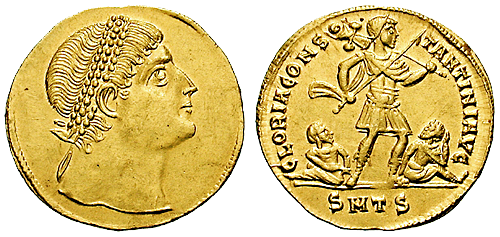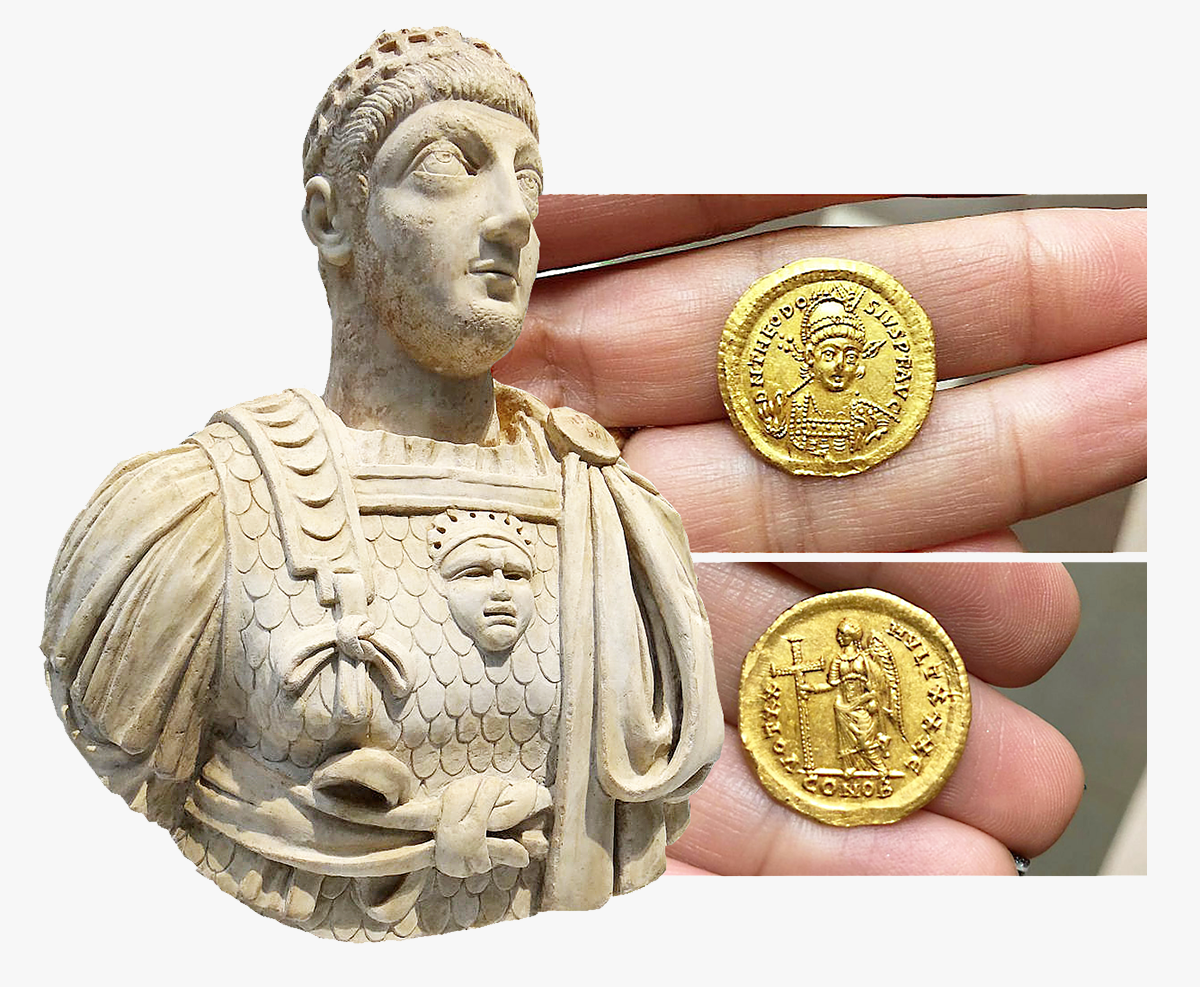
Bible, History, Archaeology
Bible,
History,
Archaeology
A solidus bearing the effigy of the Byzantine emperor Theodosius II
A rare 1600-year-old gold coin from the Byzantine era, featuring the effigy of the Byzantine emperor Theodosius II, was unearthed in February 2019.
The discovery
This extremely rare gold coin by the Byzantine emperor was discovered by chance by four young students from the Haemeq Hamaaravi high school, along the Zippori river in the Lower Galilee. «This is the first time such a piece has been unearthed in Israel».», according to a press release issued by the Israel Antiquities Authority (IAA).
According to Gabriela Bijovsky, numismatic specialist at the IAA, «this gold coin is a solidus, emblem of the Byzantine Empire, a gold coin weighing around 4.5 grams, minted during the reign of Emperor Theodosius II in Constantinople (now Istanbul) around 420-430 CE. Similar coins had already been found, but this is the first of its kind discovered in Israel».».
The solidus was created by Constantine I to finance his army and civil wars. It unofficially replaced the’aureus minted by Emperor Diocletian, corresponding to 1/60th of the Roman pound, or 5.4g, and became the Empire's new unit of account, replacing the silver denarius.
Image left: bust of the Eastern emperor Theodosius II (408-450) © Serge Ottaviani.
Top image: The obverse, a rare 1600-year-old Byzantine coin featuring the effigy of the Byzantine emperor Theodosius II © Nir Distelfeld/IAA.
Bottom image: the reverse, the image of the Goddess of Victory holding the staff of the cross. Nir Distelfeld/IAA.
Emperor Theodosius II
Emperor Theodosius II (401-450) began reigning at the age of seven in Byzantium, the eastern part of the Roman Empire whose capital was Constantinople. His name is mentioned in the Code of Theodosius or Codex Theodosianus (in Latin), which contained all the Roman imperial rulings that Theodosius II had promulgated, as well as those predating his reign.
Theodosius II was a supporter of the Eastern Orthodox Christian religion, who promoted Christianity and banished paganism. He made it the official religion of the Empire. The rights of the Jews were circumscribed; they were forbidden civil and military service - with the exception of the profession of tax collector - and the building of synagogues was prohibited.
Saint Sophia's Cathedral is a large Christian basilica in Constantinople, first built in the 4th century and then rebuilt in the 6th century under the Byzantine emperor Justinian, when it acquired its present form.
On July 10, 2020, a decree by the Turkish Council of State decided to reopen it to Muslim worship as a mosque. © Alvaro German Vilela.
The Code of Theodosius II

The first official compendium of its kind, produced on the orders of the Emperor of the East, who prescribed that the general «constitutions» issued since the reign of Constantine I should be compiled in a single work (the term «constitution» is used here as a synonym for law, even though the various texts contained in the work are not laws in the legislative sense of the term, but rather a collection of imperial regulations and decisions.
Image opposite: a solidus bearing the effigy of Constantine I, obverse and reverse. 327, Thessalonica. Classical Numismatic Group, Inc.
The Code diverted the taxes paid to the head of the Sanhedrin, leading to the eventual abolition of the Jewish legal council. Gamliel VI (400-425) had been the last holder of the office of «Nassi», head of the Sanhedrin Council.
Yair Amitzur, IAA chief archaeologist explains: «Emperor Theodosius II had abolished the post of «Nassi», and decreed that Jewish financial contributions to the Sanhedrin were henceforth to be transferred to the imperial treasury.».


